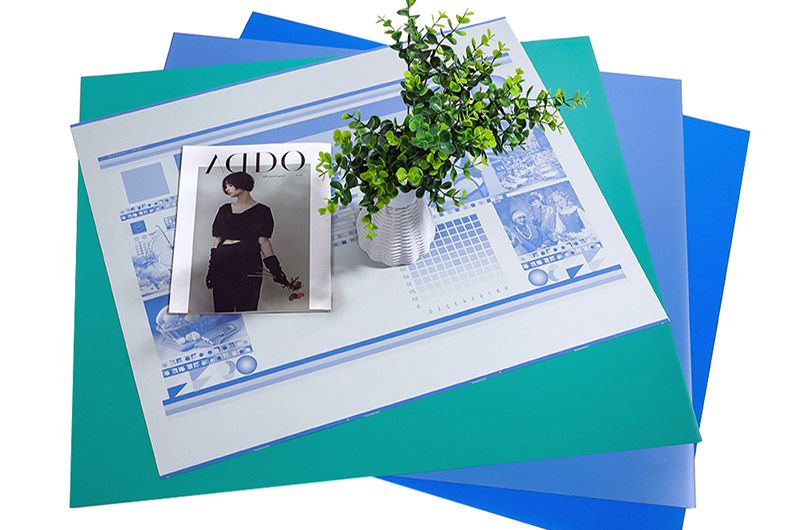
News
Photosensitive CTCP plate (full name Computer To Conventional Plate, i.e. computer direct platemaking to conventional plate material) is a printing platemaking material that combines photosensitive technology with the characteristics of traditional PS plates, and is mainly used in the digital platemaking process of the printing industry. Photosensitive CTCP plate belongs to the CTCP (Computer To Conventional Plate) technology system, and is digitally exposed directly on the traditional PS plate through a UV light source without the need for a film intermediary. Its core advantage is that it is compatible with existing PS plates, reduces platemaking costs, and realizes digital process upgrades at the same time, and is suitable for hardcover books and packaging printing.

Photosensitive imaging mechanism
Photosensitive CTCP plates usually use photopolymerization or silver salt diffusion technology:
- Photopolymerization type: The surface of the plate is coated with a photosensitive resin layer. After UV laser scanning, the resin in the exposed area undergoes polymerization reaction and solidifies, and the unexposed area dissolves in the alkaline developer to form ink-receptive images and texts. For example, Agfa's Azalea 323 plate achieves dot reduction through photosensitive resin curing, and the print run can reach 300,000 prints.
- Silver salt diffusion type: uses the silver halide emulsion layer to diffuse to the physical developing layer after exposure, and restores it to a silver image, which is suitable for high-precision dot reproduction (such as 300 lines/inch).
Typical structures include:
- Hydrophilic aluminum base: provides mechanical support and hydrophilic properties.
- Photosensitive coating: contains photosensitive resin, sensitizing dye, etc., responsible for photochemical reaction.
- Protective layer: such as polyvinyl alcohol (PVA) layer, isolates oxygen to improve sensitivity.
Core indicators
- Sensitivity: usually 0.002-0.2 mJ/cm² (lower for silver salt type), significantly lower than the 120 mJ/cm² of thermal plates.
- Dot restoration: can achieve 1%-99% dot coverage, and the maximum screen line number is up to 300 lines/inch.
- Printing endurance: can reach 250,000 prints under ordinary ink printing, and can be increased to 1 million prints after baking.
Technical advantages
- Cost compatibility:
Directly use traditional PS plate base, the plate cost is 30%-50% lower than thermal CTP plates.
- Easy operation:
Support bright room operation (some require yellow safety light), compatible with traditional PS plate development process, no additional equipment modification required.
- Environmental improvement:
Some models use neutral cleaning glue, and the amount of waste liquid is reduced by 90%, which meets the requirements of the "Printing Industry Air Pollutant Emission Standards".
Limitations
- Resolution bottleneck: Limited by the diffraction of UV light source, the minimum FM network can reach 33 microns, which is lower than the 10 microns of thermal CTP plate.
- Environmental sensitivity: Photosensitive coatings are easily affected by temperature and humidity, and storage conditions must be strictly controlled (10-30℃, humidity ≤65%).
Mainstream application areas
- Commercial printing:
Suitable for mid-range precision requirements such as albums and posters.
- Packaging printing:
It can handle special media such as UV ink and metallic ink, and performs stably in rotary printing.
- Newspaper publishing:
High sensitivity (such as silver salt plate 0.002 mJ/cm²) meets the needs of rapid plate making. The Polaris CTP equipment can output 260 plates per hour.
Typical cases
- Environmental upgrade: Chemical-free CTCP plates reduce waste liquid by 80%, suitable for high-demand scenarios such as food and medicine packaging.
- Cost control: Small and medium-sized printing companies adopt the CTCP solution, and the plate making cost is reduced by 40% compared with film + PS plates, while being compatible with existing printing presses.
PRODUCTS
ONLINE CONSULTATION
If you have any questions, please contact us and we will contact you as soon as possible.
Leave A Message
If you are interested in our products and want to know more details, please leave a message here, we will reply you as soon as we can.

